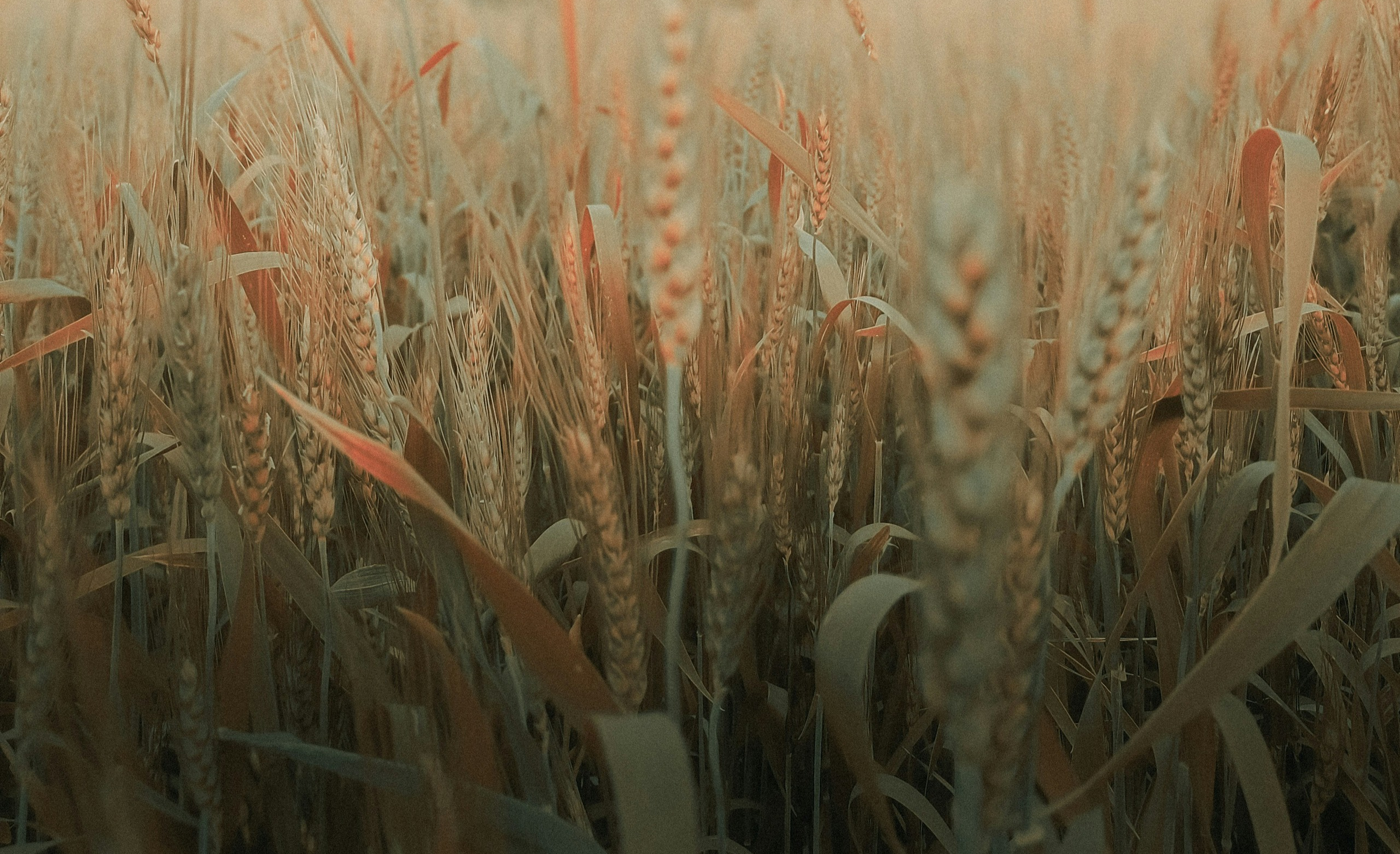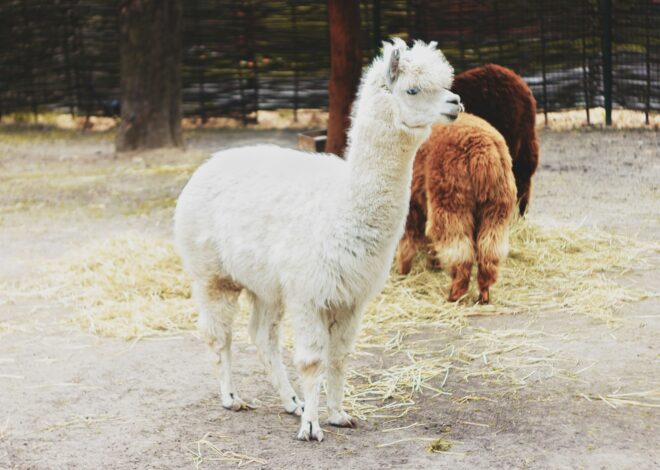
How To Grow Wheat
Whether you’re looking to start a small garden or scale up to commercial farming, knowing how to grow wheat can be incredibly rewarding. Wheat is one of the most widely cultivated crops in the world, serving as a staple food for billions.
Imagine watching golden fields sway gently in the breeze, knowing that your efforts will yield not just grain but a vital source of nourishment. Growing wheat might seem daunting at first, but with the right knowledge and preparation, it becomes an achievable goal.
From understanding soil health to choosing the best varieties suited for your climate, every step plays a crucial role in successful wheat farming. Let’s embark on this journey together and uncover everything you need to know about growing your own wheat.
Benefits of Growing Wheat
Growing wheat offers numerous advantages that appeal to both farmers and consumers. It serves as a staple food source, providing essential nutrients like carbohydrates, fiber, and proteins. This makes it vital for global food security. Wheat is also versatile in cooking.
From bread to pasta, its uses are endless. The variety available means you can choose the best type for your culinary needs or preferences. Economically, wheat farming can be lucrative. With proper management practices, yields can be substantial.
Farmers benefit from market demands which often keep prices attractive. Additionally, wheat crops improve soil health through crop rotation and cover cropping methods. These practices help prevent erosion and maintain nutrient levels in the soil.
Growing wheat supports sustainable agriculture initiatives by promoting biodiversity on farms when rotated with other crops. This balance fosters a healthier ecosystem while ensuring sustainable production over time.
Step-by-Step Guide on Growing Wheat:
Growing wheat requires careful planning and execution. Follow these steps and with a little hard work. You’ll be a successful wheat farmer in no time at all!
Step #1: Choosing the Right Land and Equipment for Wheat Farming
Selecting the ideal land for wheat farming is crucial. Look for well-drained soil with good fertility. A pH level between 6.0 and 7.5 is optimal, ensuring your wheat thrives.
Consider the climate of your region as well. Wheat prefers a temperate climate with moderate rainfall during its growing season.
Next, focus on equipment that suits your needs. Tractors and seed drills are essential tools in modern wheat farming. Depending on your scale, you may also consider combine harvesters to streamline the harvesting process.
Don’t overlook irrigation systems if you’re in an area with inconsistent rainfall. Proper irrigation can make a significant difference in yield.
Always assess how accessible your land is for transporting goods after harvest. Having convenient access to markets or storage facilities will save time and effort when it’s time to sell or store your crop.
Step #2: Preparing the Soil for Planting Wheat
Preparing the soil for wheat planting is crucial for a successful harvest. Start by testing your soil’s pH level. Wheat thrives best in slightly acidic to neutral conditions, ideally between 6.0 and 7.0.
Next, clear any debris such as weeds or remnants from previous crops. This step prevents competition for nutrients and reduces disease risk.
Then, till the soil to improve aeration and drainage. Aerated soil promotes root growth while ensuring water doesn’t pool around the seeds.
Incorporating organic matter like compost can enhance nutrient levels and structure, making it more fertile over time.
Consider adding fertilizers based on your soil test results to replenish essential nutrients that may be lacking.
Create seedbeds ready for sowing by leveling the surface properly; this helps with uniform moisture distribution after planting.
Step #3: Selecting and Planting the Right Variety of Wheat
Selecting the right variety of wheat is crucial for a successful harvest. Consider your climate, soil type, and intended use when making your choice. Common varieties include hard red winter, soft red winter, and durum wheat. Each has distinct attributes suited for different regions and purposes.
Before planting, check local agricultural guidelines or consult with nearby farmers to identify what grows best in your area. This knowledge can save time and resources.
Once you’ve selected the variety that fits your needs, it’s time to plant. Proper timing is essential; typically, wheat should be sown in early spring or fall depending on the variety chosen.
Spacing is also vital—ensure seeds are planted at the correct depth and distance apart for optimal growth. Using high-quality seed will enhance germination rates and strengthen resilience against pests or diseases later on.
Step #4: Caring for Your Wheat Crop
Caring for your wheat crop is essential to ensure a healthy yield. Regular inspections are crucial. Walk through your fields frequently to check for any signs of distress or disease.
Irrigation plays a vital role in the growth process. Ensure that your wheat receives adequate moisture, especially during dry spells. Too much water, however, can lead to root rot and other issues.
Fertilization also matters significantly. A balanced approach using both nitrogen and phosphorus will support robust growth without harming the environment.
Weed management is another critical aspect of care. Employing mulching techniques or organic herbicides can help keep unwanted plants at bay while conserving soil health.
Monitoring pest activity is key. Utilize integrated pest management strategies like natural predators or traps to minimize damage while protecting beneficial insects in your ecosystem.
Step #5: Harvesting and Storing Your Wheat
Harvesting your wheat is a crucial moment in the farming process. Timing is everything here; you want to wait until the grains are golden brown and firm but not too dry. If harvested too soon, the yield may be lower than expected.
When it’s time, use a combine harvester for efficiency. This machine cuts the plants and separates the grain from chaff in one go. Ensure that your equipment is well-maintained for optimal performance during this busy period.
Once harvested, proper storage becomes essential to prevent spoilage or pest infestations. Store your wheat in a cool, dry place with good ventilation. Grain bins or silos work best for this purpose.
Check moisture levels regularly as excess humidity can lead to mold growth. Using airtight containers can help maintain freshness while keeping pests at bay. Securely seal bags if using them for smaller quantities to avoid any unwanted visitors!
Common Pests and Diseases in Wheat Farming
Wheat farming, while rewarding, comes with its share of challenges, particularly from pests and diseases. Farmers often encounter aphids, tiny insects that suck sap from wheat plants. These critters can weaken the crop significantly. Another common pest is the armyworm.
These caterpillars munch through leaves rapidly, leading to considerable loss if not controlled in time. Fungal diseases like powdery mildew or rusts pose threats too. They thrive in humid conditions and can spread quickly across a field. Farmers must monitor their crops regularly to catch these issues early.
Integrated pest management strategies are essential for keeping both insects and diseases at bay without relying solely on chemicals.Choosing disease-resistant varieties is another effective way to safeguard your wheat harvest against potential threats throughout the growing season.
Tips for Growing Wheat Organically
Growing wheat organically requires attention to detail and a commitment to sustainable practices. Start with selecting organic seeds that are suited for your local climate. These varieties tend to be more resilient against pests and diseases. Crop rotation plays a significant role in organic farming.
By alternating wheat with legumes or other crops, you naturally enhance soil fertility and disrupt pest cycles. Utilize compost or natural fertilizers like bone meal and fish emulsion to nourish the soil without harmful chemicals. Regularly test your soil’s pH level; it should ideally range between 6.0 and 7.5 for optimal growth.
Implement companion planting by growing beneficial plants alongside wheat, which can deter pests while promoting healthy growth. Monitor moisture levels carefully through mulching techniques that help retain water without over-saturating the roots.
Sustainable Practices in Wheat Farming
Sustainable practices in wheat farming are essential for long-term productivity and environmental health. Implementing crop rotation can significantly enhance soil fertility while reducing pest buildup. By alternating wheat with legumes or other crops, farmers can improve nutrient cycling naturally.
Integrating cover crops is another effective strategy. These plants protect the soil during off-seasons and prevent erosion. They also suppress weeds and contribute organic matter back into the ground when tilled under. Additionally, precision agriculture techniques optimize resource use.
Farmers can monitor moisture levels and nutrient needs more accurately, minimizing waste of water and fertilizers. Adopting integrated pest management (IPM) helps control pests sustainably by combining biological controls with minimal chemical interventions.
This approach fosters a balanced ecosystem that benefits both crops and local wildlife. Embracing no-till or reduced tillage methods enhances soil structure and carbon sequestration, contributing positively to climate resilience in farming systems.
Conclusion: Enjoying the Fruits of
With the right knowledge and techniques, growing wheat can be a rewarding experience. From selecting your land to harvesting your crop, each step is crucial in ensuring a successful yield. As you nurture your wheat plants, you not only contribute to food security but also enjoy the satisfaction of cultivating something from scratch.
Harvest time brings its own excitement. Watching those golden stalks sway in the breeze signals that all your hard work is about to pay off. Once harvested, properly storing your wheat ensures it remains fresh and ready for use or sale.
By integrating sustainable practices and organic methods into your farming routine, you’re not just producing food; you’re contributing positively to the environment as well. Whether it’s through crop rotation or natural pest management strategies, small changes can lead to significant benefits over time.
Growing wheat opens up numerous possibilities—baking delicious bread, creating wholesome meals, or even selling at local markets. The journey from seed to harvest offers valuable lessons in patience and dedication. Enjoying the fruits of this labor means appreciating both what you’ve cultivated and how it connects us all through shared nourishment.



